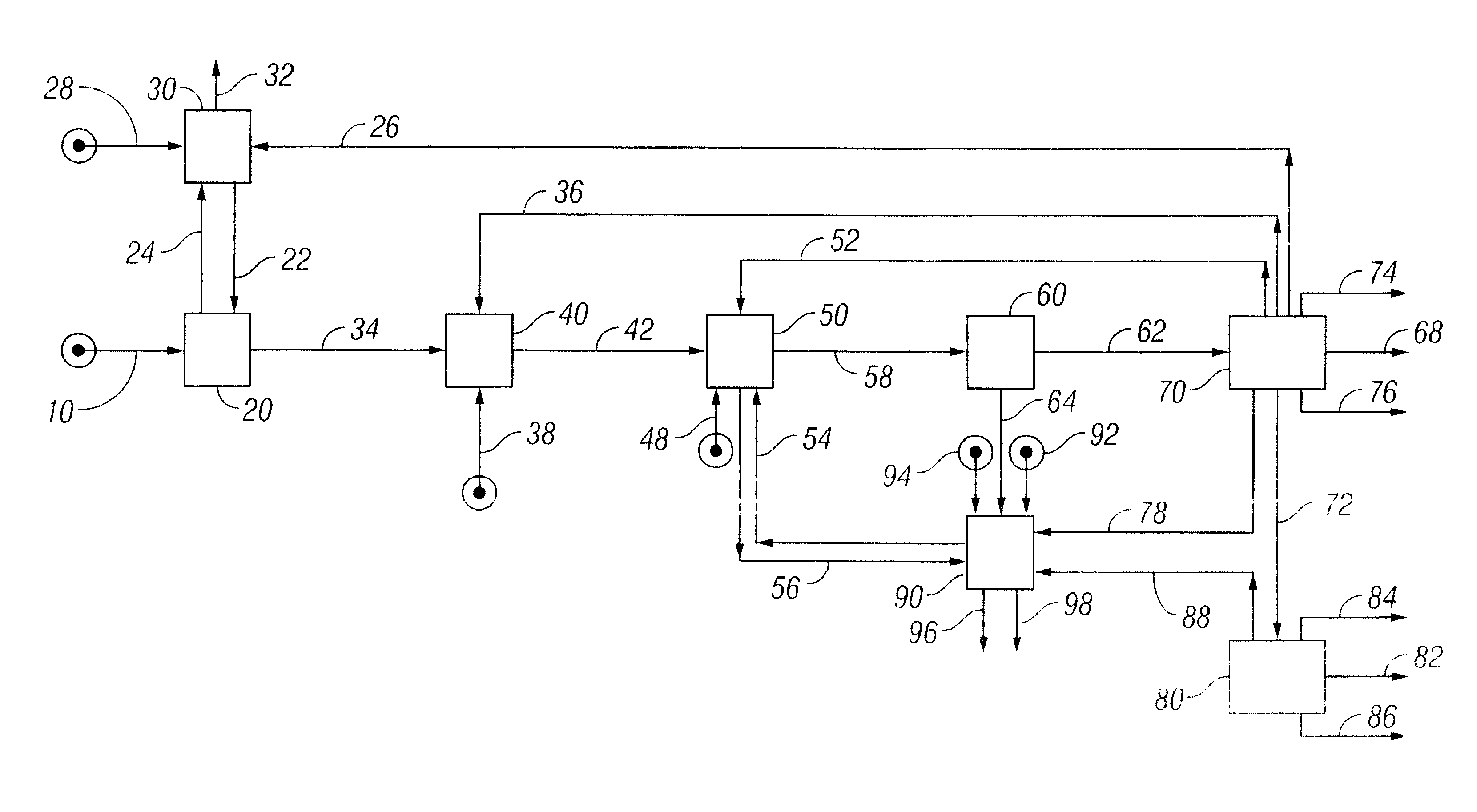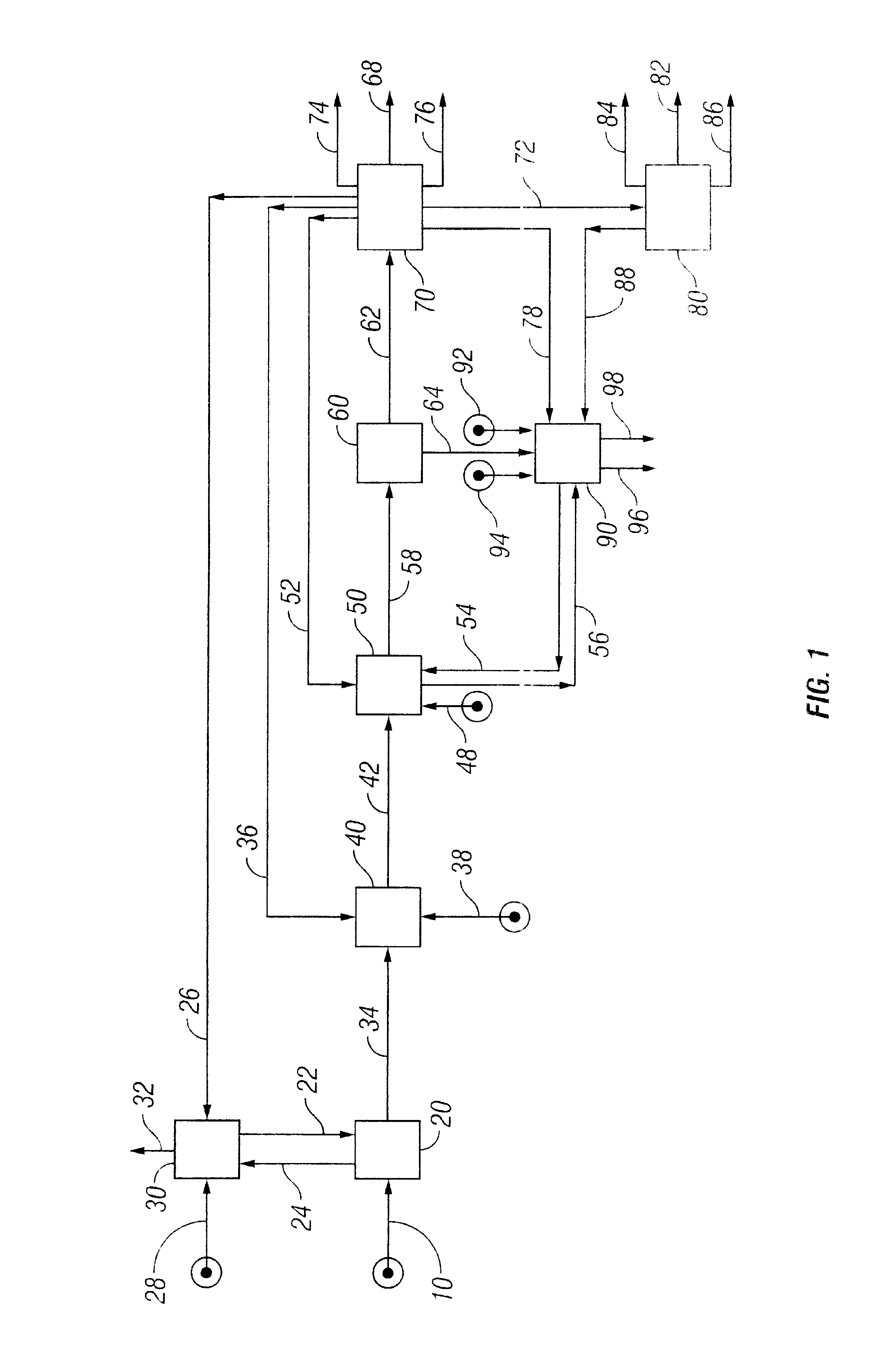Low Sodium Cleavage Product
a technology of acetone and low sodium, which is applied in the preparation of carbonyl compounds, oxygen-containing compounds, organic chemistry, etc., can solve the problems of affecting the affecting the operation efficiency contaminating the process byproducts, so as to increase the capacity of the phenol plant, increase the operating period, and shorten the shutdown period
- Summary
- Abstract
- Description
- Claims
- Application Information
AI Technical Summary
Benefits of technology
Problems solved by technology
Method used
Image
Examples
example 2
[0057] Four cationic exchanger resins were tested in a batch-mode stirred reactor to measure of resin capacities to adsorb sodium ion from WCP. The tests used cationic macroreticular resins based on sulfonated, crosslinked styrene-divinylbenzene copolymers. Typical properties for each are shown in Table 2.
[0058] Batch testing comprised stirring a 0.5 gram resin sample in 200 grams of synthetic washed cleavage product (see Example 1) containing about 61 ppmw of dissolved sodium. Four resin tests were run maintaining the solutions at a temperature of about 50.degree. C. to prevent phase separation. Sodium ion concentrations were measured for samples taken at 15-minute intervals during a one-hour run. Table 3 lists the measured sodium ion concentrations at the tests sample intervals. The results show the four resins to have roughly equal adsorption capacities and differing adsorption rates.
example 3
[0059] The ion exchange adsorption rates and capacities for sodium and sulfate in WCP were next determined in a continuous-flow column test using a two-bed exchanger unit for the resins of Example 2. The synthetic WCP of Example 1 was pumped through the two beds in series. The tests beds were fabricated using 1 / 2-inch diameter stainless steel tubing, and the beds were immersed in a thermostatically controlled oil bath to maintain operating temperatures at about 50.degree. C. The first bed held the Cation C4 resin of Example 2, above, and the second bed used a gel-type acrylic weak-base anion exchange resin in free-base form (Anion A1). Corresponding to the cation resin properties reported in Table 2, above, the Anion A resin had a typical anion exchange capacity of 5.98 eq / kg and 1.66 eq / L, and a moisture holding capacity of 60 weight percent.
[0060] Sodium ion concentrations were measured in effluent samples from the second (anion) exchanger bed, collected at 4-hour intervals. Test ...
example 4
[0062] An additional series of tests were run with commercial WCP using a WCP flow rate of 37.5 BV / h. Fresh (new) resins were installed in the columns, using the Cation C4 and Anion A1. For this experiment, sample analyses were performed using ion-chromatography / mass spectrometry, indicating an average sodium concentration of 59 ppmw in the commercial WCP.
[0063] Three adsorption campaigns were run, and after each adsorption run the columns were regenerated using the protocol of Example 3. Subsequent adsorption cycles were run using the same flow conditions as the first cycle. The data for the adsorption series are shown in Table 5. The results show that sodium levels were consistently reduced to levels of about 10 ppmw or less through multiple cycles of resin loading and regeneration.
[0064] Sulfate ion content was also measured in the effluent. The results presented in Table 6 show a pronounced reduction in WCP sulfate concentrations paralleling the sodium ion concentrations.
PUM
| Property | Measurement | Unit |
|---|---|---|
| molar ratio | aaaaa | aaaaa |
| weight percent | aaaaa | aaaaa |
| weight percent water | aaaaa | aaaaa |
Abstract
Description
Claims
Application Information
 Login to View More
Login to View More - R&D
- Intellectual Property
- Life Sciences
- Materials
- Tech Scout
- Unparalleled Data Quality
- Higher Quality Content
- 60% Fewer Hallucinations
Browse by: Latest US Patents, China's latest patents, Technical Efficacy Thesaurus, Application Domain, Technology Topic, Popular Technical Reports.
© 2025 PatSnap. All rights reserved.Legal|Privacy policy|Modern Slavery Act Transparency Statement|Sitemap|About US| Contact US: help@patsnap.com



